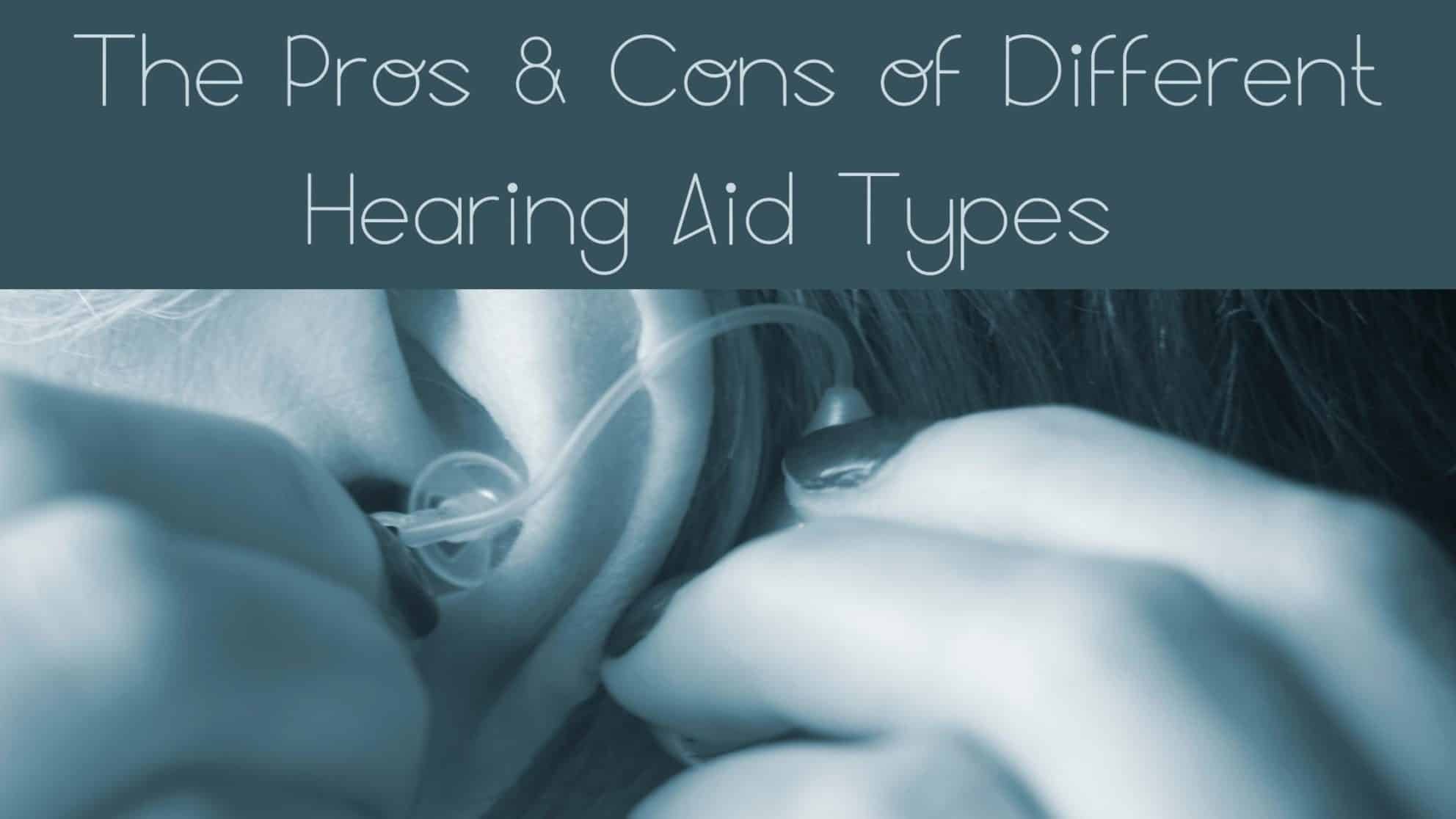Maintaining our hearing ability is an important part of good overall health and well-being. If you’ve decided to purchase a set of hearing aids, good for you! There is a set of hearing aids for every lifestyle, so it’s important to think about what you’ll need your hearing aids to do for you before you make a decision. Let’s take a look at some of the main different types of hearing aids and discuss their pros and cons.
Behind the Ear (BTE)
BTE models have a relatively large body where the parts of the hearing aid are housed. This unit sits benind the ear and is where the hearing aid microphone is located. A plastic tube delivers the hearing aid’s speaker output to a custom earmold that sits in the ear canal.
The larger size of the BTE models make them easier to handle and harder to lose which serve as a big advantage for those with arthritis or decreased vision. Because all the electronics are housed in the body, BTE models also tend to last longer than models that have active parts inside the ear canal, where earwax and more moisture can create a less hospitable environment.
Receiver in Canal (RIC)
While resembling a BTE, a RIC or sometimes called a MiniBTE, are much smaller in comparison. The body and components of the hearing aid are located behind the ear and a thin wire connects a speaker and dome that sits inside your ear canal. Some RIC models now have the ability to pull its sound from the ear canal rather from the unit itself, behind the ear. Ask your audiologist if this is something that is appropriate for you. RIC hearing aids are best for those who want a discreet hearing aid with an open fitting. This is the most common style chosen today as it can be fit on a wide range of hearing loss severities. It has gained popularity as most new models are completely reachargeable with a Lithium ion battery eliminating the need to change out disposable batteries.
In the Ear (ITE)
ITE models, unlike those mentioned so far, have no part that sits behind the ear, but instead are entirely seated in the ear canal. While they are more conspicuous than other types, they are also self-contained, avoiding the need for tubes and separate tips. The shell must be custom-made to fit your ear, but will be very comfortable as a result. Despite being comfortably customized, they can create a “full” feeling in the ear.
ITE models occupy the outer part of the ear, allowing it to house directional microphones which can create a better sense of spatial location of sounds. They often have a volume control directly on the unit, so you don’t need to a cell phone app or use a remote control.
In the Canal (ITC)
Similar to ITE’s, ITC’s are custom-made to fit your ear canal, but they are smaller than ITE’s. The ITC is still large enough for directional microphones and onboard volume control.
Completely in the Canal (CIC)
Smaller still than ITC’s, CIC’s go all the way into the ear canal. They’re nearly visible and are great for use traditional telephone use and most headphones. They fit far enough in the ear canal that your outer ear can help with sound location, though they are too small to use directional microphones or onboard volume controls. Their small size also makes them more challenging to physically handle, especially when it comes to changing batteries.
Invisible in the Canal (IIC)
IIC’s are the smallest hearing aids available. They fit even further into the ear canal. Most people will not be able to see that you are wearing hearing aids. They work well with the phone, don’t feedback, and they go so deeply into the ear canal that most people can still wear earbuds with them in. The tradeoff is that the batteries are so small they do not last long and they are more difficult to handle. If you are somone with dexeterity problems, both a CIC and IIC would be difficult for daily and weekly maintenance.
Hearing Aids at Hearing Health Center of Houston
With hearing aids types, some people have a favorite, while others may need to weigh the benefits and drawbacks of each type a little more. This is a discussion to be made with an audiologist as they are skilled in hearing aid types, specifications, your hearing loss and your needs. There is a hearing aid out there for everyone. The most important thing, is that your hearing aids are properly fitted to address your specific hearing needs. At the Hearing Health Center of Houston, our Doctors of Audiology are experts at proper hearing aid fittings which result in a more beneficial listening experience. Schedule an appointment with us today!


